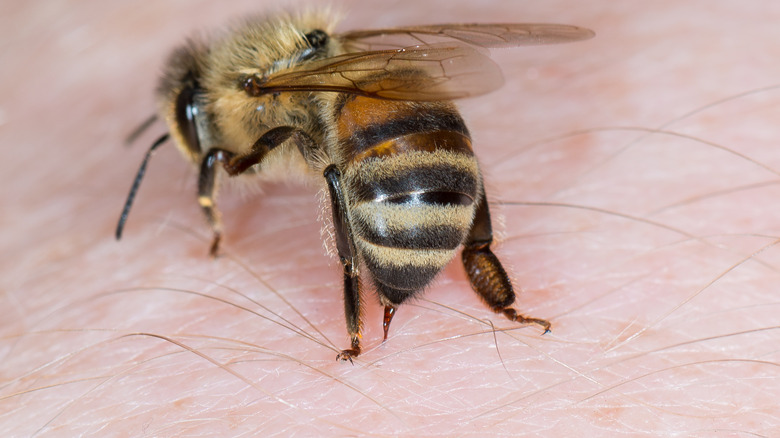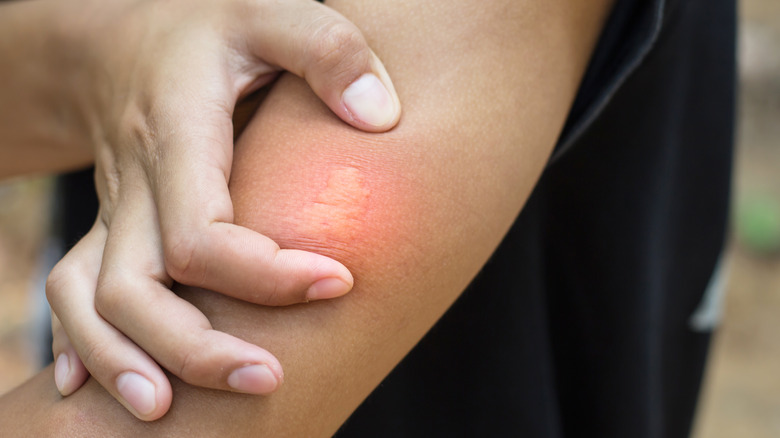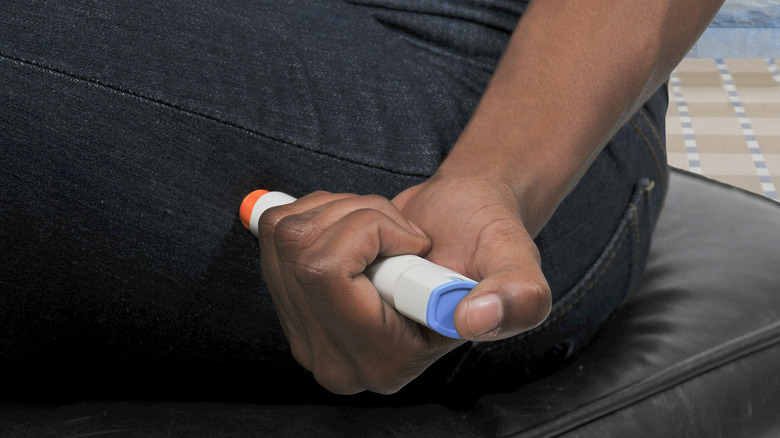What Happens If You Leave A Bee Stinger In Your Skin?
Being stung by a bee is never a pleasant experience. But for some people, it can be dangerous and even life-threatening (via the Mayo Clinic). People who are allergic to bee stings or who are stung multiple times can develop a serious reaction that requires immediate intervention.
For the average person, being stung by a bee may simply result in some pain and itching around the sting site, along with some probable redness or swelling (via Healthline). People who are allergic to bee stings experience what is known as anaphylaxis, an allergic reaction that can result in hives, swelling of the throat, and dizziness or fainting. In severe cases, anaphylaxis can lead to difficulty breathing, a decrease in blood pressure, and loss of consciousness. Given the seriousness of anaphylaxis, it's important to act quickly if you or someone you know has been stung. But should you remove the stinger? And can the symptoms of a bee sting be made worse if you leave it in?
What happens when you're stung?
A bee's stinger consists of a piercing lancet (via DermNet). It has barbs that make it impossible for the bee to retract to the stinger, which is why it remains lodged in the skin after the insect has stung you. The pain caused by a bee sting is the result of the venom released at the time of the stinging (via Healthline). This venom, called melittin, is colorless and acidic, containing both inflammatory and anti-inflammatory compounds.
According to the American Academy of Dermatology Association, it's important to remove the stinger right away after being stung by a bee. The longer it remains in your skin, the more melittin is released into your skin, increasing your pain. This is also why you shouldn't use tweezers to pull the stinger out, as the squeezing will release more venom into the sting site. Instead, try gently scraping the stinger with your fingernail or use a piece of gauze to remove it as delicately as you can.
What are your treatment options?
In the event of a severe reaction to a bee sting, a shot of epinephrine might be needed, according to Medical News Today. Epinephrine can counteract the effects of an allergic reaction and a person who is predisposed to bee sting allergies (as well as other allergies) should have one with them at all times. You may also need oxygen, IV antihistamines, or albuterol in extreme cases, according to Mayo Clinic.
If you are susceptible to bee sting allergies, you might want to consider keeping a bee sting kit, which contains an epinephrine shot, with you (via Healthline). Additionally, venom immunotherapy (VIT) can be an effective treatment (per WebMD). The patient receives weekly shots of purified venom, which can help prevent an allergic reaction. In fact, a 2017 study published in Advances in Dermatology and Allergology showed that nearly 50% of patients showed no reactions to stings following VIT treatment.
No one wants to get stung by a bee or any other insect but if you do, act quickly and remove the stinger so you can try and counteract any negative effects.


